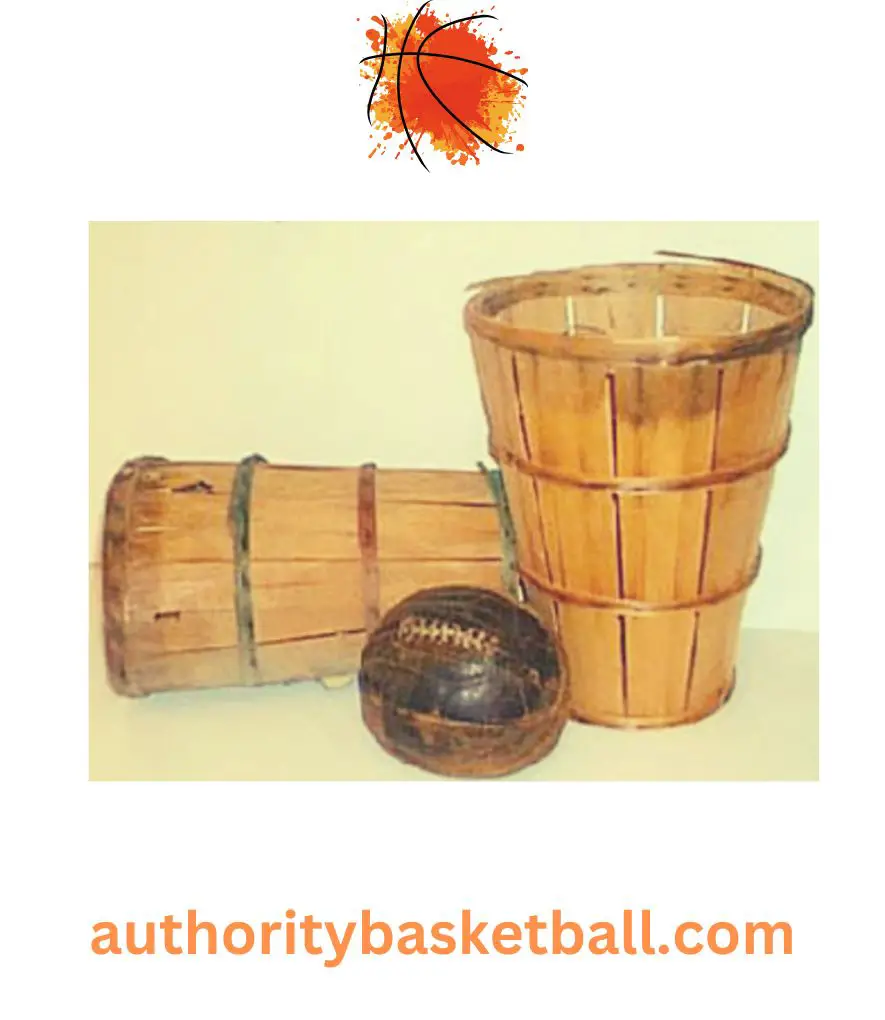Basketball is a sport that has been enjoyed by millions of people around the world for many years.
It’s a fast-paced and exciting game that requires skill, strategy, and teamwork.
One of the most iconic pieces of basketball equipment is the hoop which players aim for whenever they’re trying to make a successful basket.
Getting the basketball to fall inside that round hole is certainly no easy feat, particularly when a shooter has to deal with the competitive and aggressive nature of opposition players who are fighting tooth and nail to preserve a score line lead or prevent a turnover in results.
But the difficulty of shooting the ball into the hoop isn’t what we’re concerned with today.
Instead, we want to look at why this piece of basketball equipment mainly comes in an orange color.
So, we’ll cut right to the chase by providing a simple answer to the question at hand…
Basketball hoops are painted orange primarily because of the rules of the game. According to the rules, the basket must be visible from anywhere on the court. This means that the basket must be discernible and stand out from the other objects on the court. The orange color was chosen because it’s very distinguishable, so much so that players can notice the hoop even from a distance away.
Read on to get the full picture!
Reasons why basketball hoops are orange in color
While the orange color of basketball hoops is now a standard feature of the game, it wasn’t always this way.
In the past, basketball hoops were painted in different colors, including white and black.
However, these colors did not provide the necessary visibility required by the game.
As a result, the orange color was adopted and has been used ever since.
So, that brings us on to the first reason…
1. Visibility for players
One of the primary reasons why basketball hoops are painted orange is to improve visibility for players.

According to the rules of the game, the basket must be visible from anywhere on the court.
This means that the basket must stand out from the other objects on the court.
The bright orange color of the hoop makes it easier for players to see and aim for, especially during fast-paced games where split-second decisions can make the difference between winning and losing.
Before the 1950s, basketball hoops were generally painted brown or white, which made them less visible on the court.

The color brown was especially problematic as it blended in with the wooden backboards, making it difficult for players to see the hoop from a distance.
Butler University’s head basketball coach, Tony Hinkle, was one of the pioneers in changing the color of basketball hoops to orange.

He was the person who first came up with the idea of orange basketballs, believing that the color orange was the most visible for players and eye-catching for fans of the game.
And he was absolutely right!
Today, orange is the standard color for basketball hoops all around the world.
2. Catering to television broadcast audiences
Another reason why basketball hoops are orange is to cater to television broadcast audiences.

In the early days of basketball, games were broadcast in black and white.
This meant that the color of the basketball and the hoop did not matter as much as they do today.
However, with the advent of color television, the color of the basketball and the hoop became more important.
The bright orange color of the basketball hoop makes it easier for viewers to follow the action on the court.
The color provides a visual anchor for the viewer, making it easier to see where the ball is going and where the players are moving.
This is especially important for viewers who are watching the game on a small screen, where it can be difficult to see the details of the game.
Overall, the decision to make basketball hoops orange was a smart one.
The color provides excellent visibility for players and viewers alike, making it easier to follow the action on the court.
What were basketball hoops like before the orange color was adopted?
The first basketball hoop was invented in 1891 by Dr. James Naismith, a Canadian physical education instructor.
The first basketball hoops were made of peach baskets, which were nailed to the walls of the gymnasium where the first basketball game was played.

The baskets had no holes in the bottom, so players had to climb a ladder to retrieve the ball after each basket was scored.
More so, they weren’t designed to withstand the force of a basketball slamming into them, causing them to regularly break during games.
However, over time, basketball hoops began to undergo significant changes.
For starters, in the early 1900s metal hoops were introduced, which were more durable than the peach baskets.
The first metal hoops were made of cast iron and had a closed bottom, which prevented the ball from passing through the hoop.
In 1912, the bottom of the hoop was opened up, allowing the ball to pass through and eliminating the need for a ladder to retrieve the ball after each basket was scored.
Have a read of our dedicated article on why basketball hoops have nets for greater context on this.
Another significant change in basketball hoops occurred in the 1940s, when the rims were made of steel and the backboards were made of glass.
This allowed for more forceful shots and dunks without breaking the hoop or injuring the player.
Furthermore, the rims were also made to be more flexible, which reduced the impact of the ball hitting the rim and increased the chances of the ball going in the basket.
Today, basketball hoops are made of a variety of materials, including steel, aluminium, and fiberglass.

Additionally, the rims are designed to be breakaway, which means they can bend and flex without breaking or injuring the player.
Finally, the backboards themselves are typically made of tempered glass, which is strong and durable, and the rims are painted bright orange to improve visibility for players and spectators.
Such changes are pretty good indicators for why basketball hoops are so expensive these days!
So, as you can see, basketball hoops have seen many cosmetic adjustments and improvements over the years.
From peach baskets, to breakaway rims and fantastic trampoline basketball hoops, their evolution has made the game more exciting and accessible to players of all skill levels.
Are all basketball hoops orange?
While orange is the most common color for basketball hoops, not all of them are orange.
There are some variations in color that can be seen in different types of basketball hoops.
Here are a few examples:
- Clear hoops: Some basketball hoops are made of clear materials, such as acrylic or tempered glass. These hoops are often used in professional or high-level games, as they offer a clear view of the basket without any color distortion.
- Black hoops: Black basketball hoops are also available and are often used in outdoor settings. The black color helps the hoop blend in with the surroundings and reduces glare from the sun.
- Colored hoops: Some basketball hoops can be customized with different colors, including red, blue, and green. These hoops are often used in recreational settings or for personal use.
However, it’s important to note that the majority of basketball hoops are still painted orange.
This is because the orange color provides the best contrast against the blue or white background of the basketball court, making it easier for players to see the basket and aim their shots accurately.
Additionally, the orange color has become a symbol of basketball and is instantly recognizable to fans and players alike.
So while there may be some variations in color, the orange basketball hoop remains the most iconic and widely used symbol of the game of basketball.
Closing thoughts
Ultimately, basketball hoops are orange in color because of the visibility benefit to players and fans alike.
Tony Hinkle – a renowned basketball coach – created the orange color scheme of basketball as well as the orange background.
This made it easier for players to see the rim and the ball while playing.
While some may argue that the orange color is simply tradition, the fact remains that it serves a practical purpose on the court.
The bright color stands out against the background and makes it easier for players to aim and shoot accurately. It also helps referees and fans see the action more clearly.
But why stop at orange?
Could other colors be used for basketball hoops?
While it’s possible, it’s unlikely to catch on.
The orange color has become so ingrained in the sport that it’s hard to imagine a basketball game without it.
Overall, the orange color of basketball hoops is a unique and practical aspect of the sport.
It’s a small detail that has become an important part of basketball culture and tradition.
So, the next time you watch a game, take a moment to appreciate the bright orange rim and the history behind it.
- The Most Popular Prop Bets Made During the NCAA Final Four Tournament - February 9, 2024
- Evaluating the Enigma: Does LeBron James Possess a No-Trade Clause? - May 16, 2023
- Gravity’s Dance: Unveiling the Art of Bouncing Basketballs - May 16, 2023

